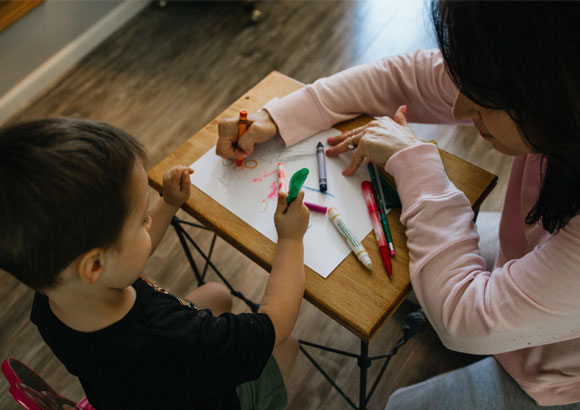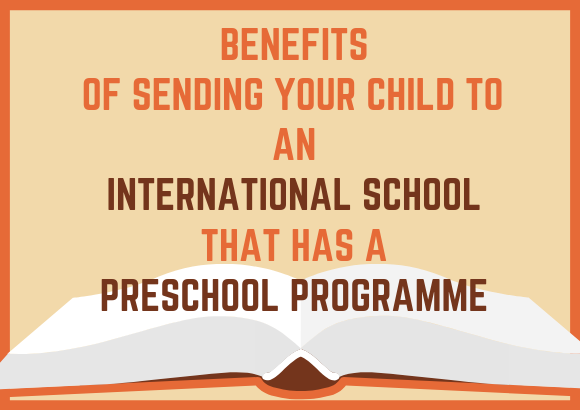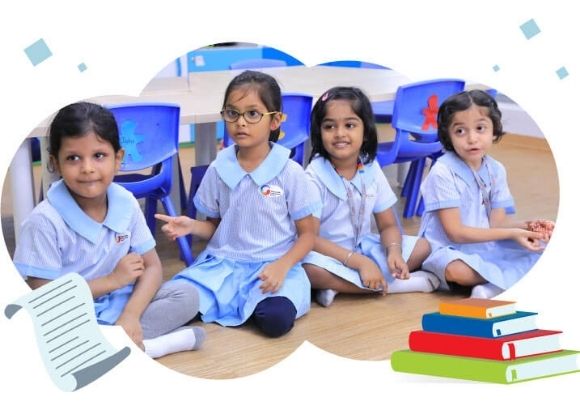What should i be looking for in a preschool ?

Your child’s needs: The programmes that preschool offers are very crucial for your child’s cognitive development. You have to pay attention to the balance between study time, playtime, and outside time. Also, programmes that include music and art are very important for children to explore their creativity.
The teachers: Teachers are the substitute parents at school. It is important to have a teacher that has experience in teaching children. Young children require more attention as compared to teenage students. Make sure that the teachers at the preschool of your choice are positive and encouraging.
Security: Since preschools have outside playtime, you have to make sure that there are no dangerous materials in the playground and there are health and safety measures for children to play freely. Preschools should be open with parents, therefore transparency between teacher and parents is a must.
The school’s community: A tight-knit community of parents can come in handy if you are looking to be active in contributing to your child’s education. Alongside other parents, you can design activities outside from school to give children more opportunity to be closer with each other. Also, having a parents community allows easier communication with school through representatives.
Class size: It is important to note if the teacher to student ratio is low. The fewer children that a teacher has to handle, the easier it is for the teacher to give attention to each individual. Children will also have more time for problem-solving activities.
How Do I Verify The Safety Of Kindergartens and Daycare Centres?

In general, there are a number of indicators that display the safety of the preschool:
Transparency: Communication between parents and teachers should be clear and candid at all times. Occasional parental visits should be allowed for parents to check on their child's progress. Besides that, teachers should attempt their best in answering parents’ questions.
Physical Barriers: Making sure that there are limitations, such as gates or barriers around the school, is important to ensure the safety of your child. Besides physical inhibitors, there should be supervisors, homeroom teachers and assistants, to watch over children while they are playing outside class. Gates and barriers should be non-hazardous and are not harmful for children to play around. CCTV cameras installed around the centre would definitely be a bonus and bring you further peace of mind.
Are the Google Reviews Really Helpful?

Google reviews are made of users’ opinion on the preschool. Users are free to type anything and rate the school by clicking the amount of ‘stars’ on the preschool’s page on google. The review can help to a certain extent, for parents to gain extra information on the preschool they are interested in. However, it is also important to take the information with a grain of salt as just about anyone can leave Google reviews.
There are other aspects that you should also consider when looking up Google reviews, such as the total number of reviews and the credibility of the reviewer. The general idea is that Google reviews can serve as extra information on top of your personal research from the website or hearing about first-hand experience from someone you know.
How Much Is Too Much For Daycare Facilities?

The price for daycare facilities depends on the area. In rural areas, it might cost less, ranging from RM400-RM700, while in urban areas, it can cost up to RM1,300.
Higher prices normally mean that there are better facilities and services provided by the daycare. The price listed above is an estimation of the average price of daycare so it can be used as a reference while looking for a suitable daycare for your child.
I’m Saving Up For Their Future - Why Spend on Early Childcare?

Early phase of a child's development is as important as higher education. Child’s cognitive and language skills are developed early through the activities in preschool.
Preschool provides an opportunity for children to engage all their senses through creative and academic-related activities. Children are prepared to be ready for school at preschool. They will learn to fortify their social and emotional development through playing with peers and interacting with teachers. This process can help solidify your child’s confidence and sense of self.
Besides providing them with a solid foundation to continue with the next phase of their education, early childcare centres equip them with skills such as being able to ‘present’ in class, for example, or even taking care of their physical and mental well-being.
What Is the Main Difference Between Montessori, Reggio and Waldorf?

Montessori: The Montessori philosophy is based on child-directed learning from observation and scientific research. Children are encouraged to make decisions in the classroom with teachers as their guide. Children are to learn cooperatively in a non-competitive environment.
Reggio Emilia: The Reggio Emilia approach is a self-directed experiential learning in relationship-driven environments. The foundation of the programme is based on respect, responsibility, and community through exploration, discovery, and play. The examples of activities are painting, sculpting, and drama.
Waldorf: Waldorf preschool prioritises reaching children’s hearts in their education. The Waldorf school of thought believes that children’s curiosity is the greatest gift of learning, therefore the programme does not push much of an academic slant. The programme includes creative/imaginative playtime, outdoor play, circle/story time, artistic activities, snack time, and instilling a love of learning.
In conclusion, Montessori focuses on a sensory approach as well as the 3 R's (arithmetic, reading and writing), Reggio Emilia provides a platform for students to express themselves, and Waldorf revolves its programme around children’s curiosity.
Choosing Between The Traditional Approach vs The Exploratory Approach

Lorem Ipsum is simply dummy text of the printing and typesetting industry. Lorem Ipsum has been the industry's standard dummy text ever since the 1500s, when Lorem Ipsum is simply dummy text of the printing and typesetting industry. Lorem Ipsum has been the industry's standard dummy text ever since the 1500s, when
Lorem Ipsum is simply dummy text of the printing and typesetting industry. Lorem Ipsum has been the industry's standard dummy text ever since the 1500s, when Lorem Ipsum is simply dummy text of the printing and typesetting industry. Lorem Ipsum has been the industry's standard dummy text ever since the 1500s, when
I’m Interested In Picking A School Where My Child Can Continue Into Primary School

There are quite a few options for this if you prefer to provide your child with continuity. Many parents prefer to have their child be familiar with their surroundings, and will likely choose an international school that caters for 3 year olds right up to 17 year olds.
Schools that cater for a wide range of ages will usually be very adept at preparing the child to enter into first grade.
It’s worth considering this option as there will be less of a transition for your child, although children are resilient and able to adapt to change.
I’m Considering A Bilingual Kindergarten - What Are My Options?

In the Petaling Jaya area, Chiltern House Preschool offers both English-speaker and Mandarin-speaker teachers in each classroom.
Rafflesia International School is also a notable international school that offers a bilingual programme.
Trinity Kids offer a trilingual (English, Bahasa Melayu, and Mandarin) programme.
What Is The International Baccalaureate (IB) Primary Years Programme?

IB primary Years programme uses a framework in which children are the agents of their own learning. It focuses on building a strong relationship and community in the classroom.
It offers transdisciplinarity that transcends subjects in which it teaches students that learning has relevance between, across, and beyond subjects and transcends borders connecting to real-world application.
The IB approach to learning is based on the foundation of learning how to learn which is essential for students’ lives out of school. The programme supports students in learning and practicing thinking skills, communication skills, research skills, self-management skills, and social skills.
There are commonly six subject areas identified within the IB Primary Years Programme: language, mathematics, science, social studies, arts, and personal, social and physical education.
How Do I Ensure My Child Will Learn How To Read?

Enrolling your child to a preschool will assist them to learn reading via fun activities and peer learning. There will be training and tests that can encourage and pique your child’s interest to read.
At home, you can help by reading story books and conversing with them to increase their range of vocabulary. Children are known to be easily distracted. You can keep things fresh and interesting to create an inviting environment to learn for them. For example, playing the different character voices while reading to them will keep them engaged and curious to know more.


